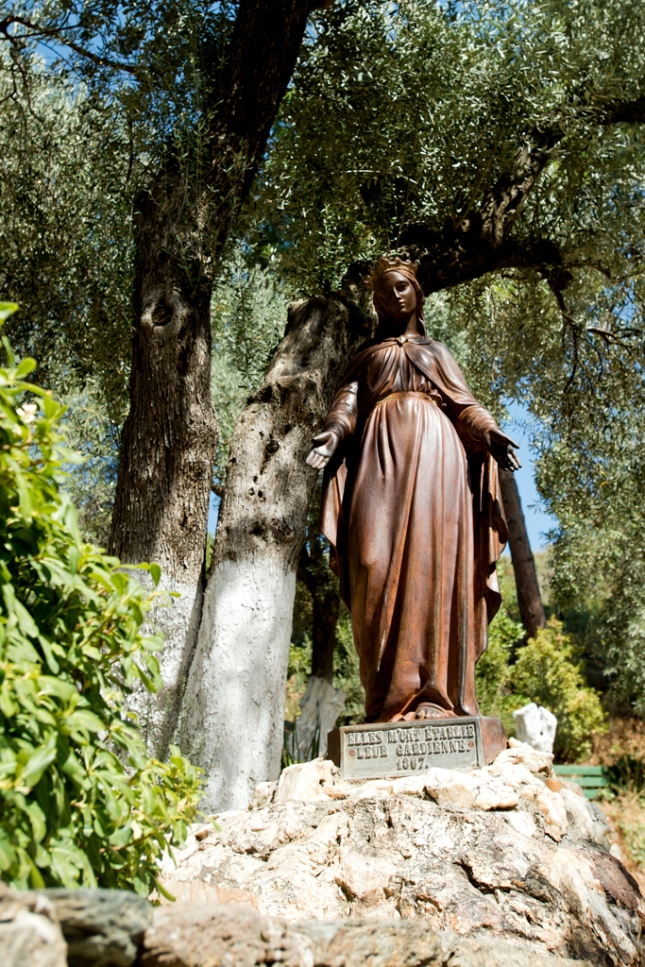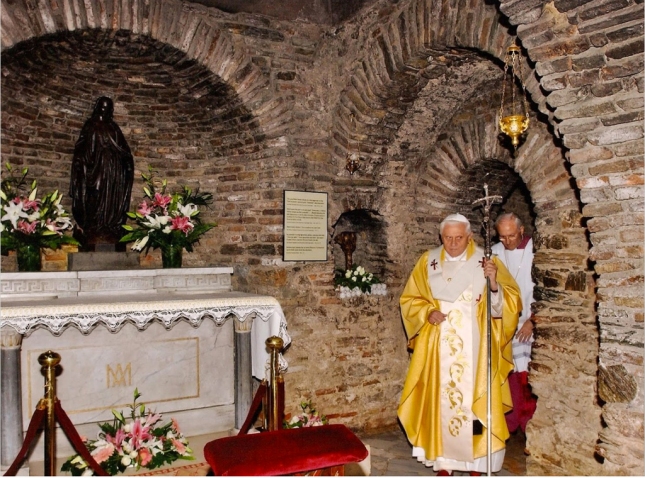
The House of the Virgin (Meryemana in Turkish), located in a nature park between Ephesus and Seljuk, is believed to be the last residence of the Virgin Mary, mother of Jesus. The peaceful site is sacred to both Catholics and Muslims, (Muslims also believe in the virgin birth and honor Mary as the mother of the Prophet Jesus and given the emphasis placed on the Virgin Mary in the Qur’an.) and is visited by many tourists and pilgrims.
Catholic tradition associates Mary with Ephesus because at the time of his death, Jesus put Mary in the care of John, who then spent many years spreading Christianity in this region.
The house was discovered in the 19th century by following the descriptions in the reported visions of Blessed Anne Catherine Emmerich (1774–1824), a Roman Catholic nun and visionary, which were published as a book by Clemens Brentano after her death, Following the book’s publication, ruins of a house were discovered at the present site and declared to be the house where Mary had lived the final years of her life. Known as the Panaya Kapula (‘Doorway to the Virgin’), the site has been a much venerated pilgrimage destination since the late 1880
The shrine itself is not extensively large, but may rather be described as a modest chapel. Upon entrance to the chapel, a pilgrim is met by one single large room where an altar along with a large statue of the Blessed Virgin Mary is prominently displayed in the center. The small, T-shaped stone building consists of a bedroom on the right side — traditionally associated with the actual room where the Virgin Mary is believed to have slept, and a kitchen (on the left). The interior is kept simple and austere, fitted only with an altar, images of Mary and candles.
Some visitors choose to kneel in front of the alter instead. The alter has a small statue of Mary surrounded by colourful bouquets of flowers. Photography is not allowed inside the chapel.
The spring is found at the exit of the church , a rather salt water, and can be drunk and is believed to have miraculous powers of healing or fertility, and many miracles have been reported. Inside the house are crutches and canes said to be left behind by those who were healed by the sacred spring.
The most amazing was the wishing wall which pilgrims have used by tying their personal intension on thousands of scraps of paper or fabric, and photos
A liturgical ceremony is held here each year on August 15, Catholics and Muslims gather at the shrine to commemorate the Assumption of Mary.
The Roman Catholic Church has never pronounced on the authenticity of the house, for lack of scientifically acceptable evidence. It has, however, from the blessing of the first pilgrimage by Pop Leo XIII in 1896, taken a positive attitude towards the site. Pope Pius XII in 1951, following the definition of the dogma of the Assumption in 1950, elevated the house to the status of a holy place, a privilege later made permanent by Pope John XXIII, and the most recent in 2006 by Pope Benedict XVI










